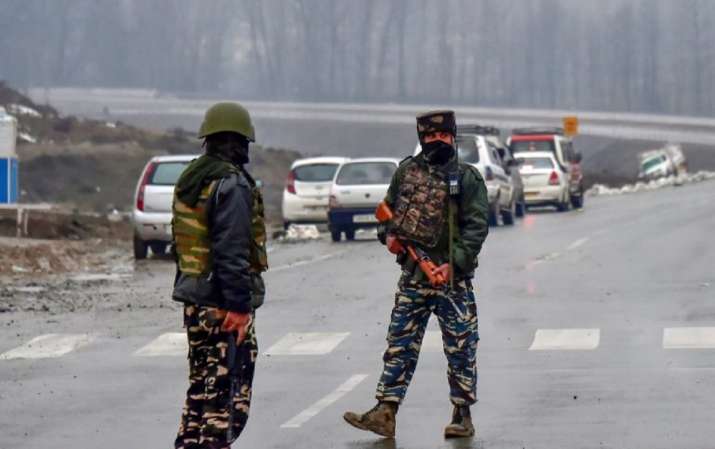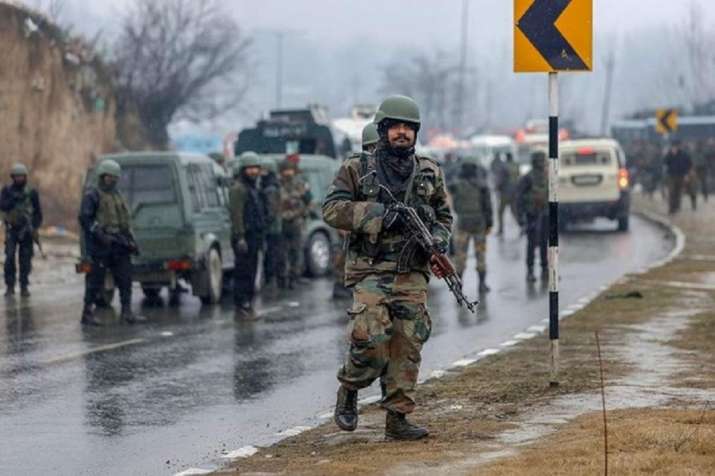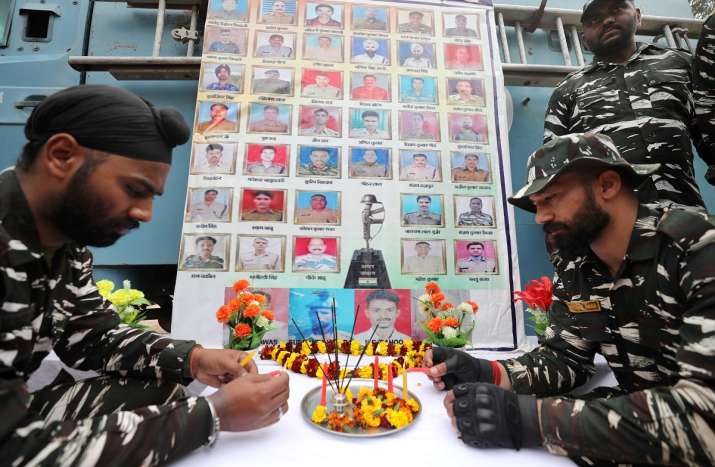[ad_1]

Pulwama terror attack had led to the martyrdom of 40 Indian soldiers
A ‘black day’ in the history of India – February 14, 2021 marks two years of the Pulwama terror attack, when 40 Indian soldiers were martyred in one of the worst terror attacks in Jammu and Kashmir. It happened after a suicide bomber rammed an IED-laden vehicle into the security convoy. The convoy had 78 buses in which around 2,500 personnel were travelling from Jammu to Srinagar. The attack, which was reported near Awantipora at nearly 3:15 pm resulted in the death of 40 CRPF jawans, while many others were left injured.
Days later, the attack was claimed by Pakistan-based terrorist group Jaish-e-Mohammed (JeM). A 22-year-old suicide bomber Adil Ahmad Dar had rammed the explosive-laden vehicle into the bus. JeM had also released a video of the assailant Adil from Kakapora, who had joined the group a year earlier.
Pulwama Attack: What Investigations Revealed
A 12-member team, which was dispatched by the National Investigation Agency, to probe the Pulwama terror attack worked with the Jammu and Kashmir police. Initial investigations suggested the car was carrying more than 300 kilograms (660 lb) of explosives, including 80 kilograms (180 lb) of RDX, a high explosive and ammonium nitrate.
Lt Gen Hooda said that the explosives might have been stolen from a construction site. He initially said that it was not possible that they were smuggled from across the border, but later said that he could not rule it out.
Later, the National Investigation Agency was able to establish and confirm the identity of the suicide bombers as DNA samples from “meagre fragments of the car” used in suicide attacks matched with Adil Ahmad Dar’s father. However, even after a year of investigation, NIA was unable to trace the source of explosives.

40 soldiers were martyred in the Pulwama terror attack in Jammu and Kashmir in 2019
Pulwama Attack: Balakot Airstrike, India-Pakistan Standoff
After the Pulwama terror attack, the government of India urged the Financial Action Task Force Laundering (FATF) to put Pakistan on the blacklist. The FATF decided to keep it on the ‘grey list’ and gave Pakistan time till October 2019 to comply with the 27 conditions it had laid down in June 2018, when it was put on the ‘grey list’, with an attending caveat. If Pakistan failed to comply, it would be added to the blacklist. On 17 February, the state administration revoked security provisions for separatist leaders.
On February 26, twelve Mirage 2000 jets of the Indian Air Force crossed the Line of Control (LoC) and dropped bombs into Balakot, Pakistan. India claimed that it attacked a Jaish-e-Mohammed training camp and killed a large number of terrorists, reported to be between 300 and 350. Meanwhile, Pakistan claimed that they quickly scrambled jets to intercept the IAF jets, who dropped their payloads to quickly return over the Line of Control.
On February 27, the Pakistan Air Force conducted an airstrike into Jammu and Kashmir in retaliation for the Indian airstrike the day before. Both Pakistan and India agreed that no damage was caused by Pakistan’s airstrike. However, in an ensuing dogfight between Indian and Pakistani jets, an Indian MiG-21 was shot down over Pakistan and its pilot – Wing Commander Abhinandan Varthaman was captured. Pakistan later released Varthaman on March 1.

Jammu: Central Reserve Police Force (CRPF) personnel pay tribute to the martyrs, on the eve of the second anniversary of Pulwama attack, in Jammu, Saturday, Feb. 13, 2021.
History Of Deadly Terror Attacks In J&K
Since 2015, Pakistan-based terrorists in Kashmir have increasingly taken to high-profile suicide attacks against the Indian security forces. In July 2015, three gunmen had attacked a bus and police station in Gurdaspur. Early in 2016, four to six gunmen had attacked the Pathankot Air Force Station. In February and June 2016, terrorists had killed nine and eight security personnel respectively in Pampore.
In September 2016, four assailants had attacked an Indian Army brigade headquarters in Uri killing 19 soldiers. On 31 December 2017, the Commando Training Centre at Lethpora was also attacked by militants killing five security personnel. These attacks took place in the vicinity of the Jammu Srinagar National Highway.
Latest India News
[ad_2]
Source link